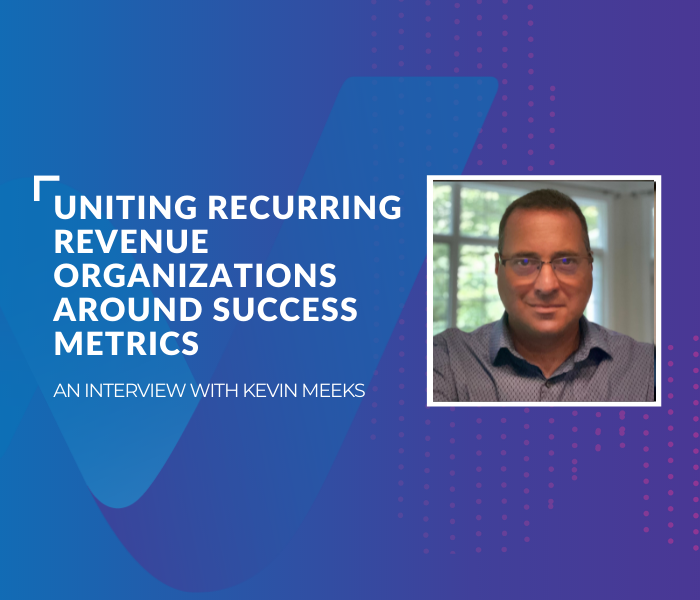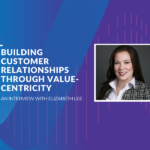Proving The Power of Customer Success
According to Totango, 91% of Customer Success leaders stated that their teams had expanded over the last year, with more than 12% saying they had grown by over 50% (2021). The subscription model has exploded in the last decade and fundamentally changed how software companies operate, measure success metrics and engage with customers. As the pioneer of this new mode of business, Customer Success (CS) has increasingly become the most important team in propelling customer retention and expansion and the biggest driver of economic growth in SaaS organizations. Unfortunately, some software leaders still struggle to make the case for Customer Success as a bottom-line business imperative and showcase its ROI to the overall organization, missing out on the opportunity to drive unparalleled revenue growth.
To put this into context , I spoke with visionary leader and Valuize’s new Industry Principal: B2B Technology, Kevin Meeks. Kevin has over two decades of experience building and leading enterprise pre-Sales and Customer Success organizations in the B2B tech industry. During our conversation, Kevin shared his expertise on how leaders can create a market-leading Customer Success Organization, streamline the handoff between Pre-sales and Post-sales and effectively communicate the value of Customer Success to Senior Leadership and throughout the organization using key success metrics.
Q: What was your first job and how did you get started in customer success?
My first job ever was as a busboy at a Mexican restaurant. It was my first foray into the world of customer experience and customer enjoyment.
I got started in Customer Success while I was leading a pre-Sales team at Splunk. The company wanted to drive a different experience with a Customer Success organization, one focused on leveraging commercial experience focusing on outcomes and value versus a technical customer experience. At that time, Splunk was undergoing a powerful shift; they wanted to take the outcomes and value that Sales Engineers prescribed in Pre-sales and apply that same mentality to drive a better customer experience in the Post-sales via Customer Success. I was tasked to lead that transformation, which marked my transition into Post-sales and Customer Success.
Q: Why did you decide to join Valuize? What excites you most about joining Valuize?
Valuize is an industry leader in the Customer Success space. I worked with Valuize while I was at Splunk to build our CS strategy so I know firsthand of the extensive knowledge and domain expertise that Valuize brings to the table. It was truly a consulting experience and I wanted to be a part of it.
I think the customer success space is still in its infancy in terms of what it means to a recurring revenue company. We have a unique opportunity to help coach and guide other CCOs, CROs and Senior leaders on how to build a best-in-class Customer Success organization. I’ve been living and breathing this for many years, so I’m really excited about now being able to help guide and mentor other executives on their CS journey.
Q: How have you seen the customer success domain change since starting your career? How do you think the domain will continue to evolve?
Customer Success started out as a support experience, then transitioned into an administrative approach. Now, Customer Success is all about driving real outcomes and value with customers and ensuring that they’re getting the return on their investment. If your customers aren’t getting value from your product, they’re not going to renew their subscription and you’re not going to hit your Net Dollar Retention (NDR), growth goals or key success metrics. Given the importance of CS to an organization’s bottom-line, Customer Success has rightfully become a board-level conversation.
Q: Can you tell us about your time serving as Vice President, Global CSM and Renewals at Splunk? What was your proudest accomplishment?
My proudest accomplishment at Splunk was earning a seat at the table. Customer Success went from a function that no one really understood to an outcomes-driven organization that drove real, measurable value to our customers and the company. From that experience, the organization’s entire mindset around Customer Success changed. We began talking about success even before the customer became a customer in the Pre-Sales motion, and we worked together as a team to optimize our value selling and delivery cycle throughout the customer journey. That level of unity and visibility was a really proud moment, because we proved the value of Customer Success to the business through tangible and sustainable growth and success metrics.
Q: In your career, how have you helped align different cross-functional teams around the value lifecycle? How do you recommend that other leaders facilitate this within their organizations?
The value lifecycle starts as early as Marketing. If you’re marketing a set of use cases to prospective customers, you have to ensure you’re selling to those use cases during your Sales cycle and delivering on those promises in your Customer Success motion.
To bring these three teams together, you have to collectively answer some challenging questions: what are the outcomes we’re driving towards? Who are our key personas, and what business problems keep them awake at night? How do we serve them and solve these problems for them together?
I come from a Sales and Sales Engineering background, so that’s helped me bridge some of the gaps commonly found in the transition from Pre-sales to Post-sales teams to ensure a smooth translation of promised value into delivered value for the customer.
Q: Data is undoubtedly a core component of a strong CS organization. What are some effective ways that organizations can leverage data science to better understand their customers?
Ironically, most companies have so much information and data on their customers that they struggle to leverage that data effectively. Capturing and harnessing data is so critical because it helps you understand how your customers are doing, whether these accounts are healthy or at risk, and if they’ve become loyal advocates of your organization.
It also helps you understand when your customers are in trouble so that you can be proactive about how to re-engage them, and have the right playbooks and automation in place to drive and scale that engagement.
This leads to the essential question of scalability; how do I use data to drive efficiencies? Building automation, playbooks and runbooks based on that data is crucial. Data is at the heart of everything that we do as a CS organization because it allows us to be proactive and reactive at the right time and it allows us to serve the right content to the right persona at the right time.
Q: If you needed to prove the ROI of Customer Success to a C-Suite Leadership team, how would you approach that conversation?
This conversation is the thing that really changed the game at Splunk. We based our conversation around business impact success metrics; Time to Next Purchase and Value of the Next Purchase. Our Executive team really took notice when we proved that with the right Customer Success program, organization and execution, we could shrink the Time to Next Purchase and accelerate the Value of the Next Purchase. It’s this context that matters most to Senior Leadership and Sales .
That conversation then evolved to Net Dollar Retention. Given that in the SaaS world, Annual Recurring Revenue is king, you’ve got to ensure that you’re supporting and growing your existing customer base.
The last, and equally critical, piece is your cost. Everybody wants to talk about Customer Lifetime Value and NDR, but you also have to consider your Customer Retention Cost (CRC) because you can’t blow out your costs to save a customer. You need to start talking in the language that the CFO, CRO and the CEO care about, which is centered around retention and retention cost. So, the challenge all Customer Success organizations face is; how do I scale the organization properly to drive the right business outcomes (LTV, NDR) with the right cost basis (CRC)?
Q: Value realization is the true nucleus of Customer Success. How have you seen organizations succeed at delivering value to their customers?
You need to understand what value means from the lens of the customer. I think that oftentimes, organizations get caught up in what value means to them as a company and not what value means to their customers. To truly understand customer value, you need to have very candid conversations with them. Ask your customers to tell you what success and value means to them, so that you can center your entire organization around these outcomes. From my experience, I find that leaders most often miss the mark when they don’t take the time to truly understand the outcomes and value that their customers are hoping to achieve.
Q: When it comes to optimizing the retention and expansion of customers, what do you see as the biggest opportunities for C-Suite leaders to pursue in 2021 and beyond?
I think the opportunity is to get customers to realize value quicker and more efficiently. We talk a lot about Time to Value, but I caution a lot of CCOs about focusing too heavily on that metric, because I don’t believe it’s as critical as Time to Next Value and ongoing value. It’s easy to get that first quick win, but how do you continue to build upon that win to get your customers to the next level of value realization? The first set of values might make your customer happy in the short-term, but the next set and continuous sets of values will get the flywheel turning and create ongoing expansion opportunities and economic growth for your company. This is where proper success planning is critical, building out a roadmap of use cases that will drive value over a longer period of time.
Q: What’s your favourite way to spend a Sunday?
I like to spend my Sundays on the boat. We live in Annapolis, Maryland, which is a big boating community. Everyone either has a boat, has access to a boat, or has a friend with a boat! I love to cruise over to the various islands, meet some friends and have some cocktails. That’s the Annapolis life!
Build An Unstoppable Customer Success Organization
To take your Customer Success organization to the next level and cement its status as an economic growth engine, follow Kevin’s strategic recommendations:
- When talking to C-Suite Leadership about Customer Success, you need to talk in a language they care about; business impact, retention and success metrics. Customer Adoption & Health, Time to Next Purchase, Value of the Next Purchase, NDR and CRC are all key success metrics that should drive this conversation forward.
- Value is the foundation of a strong Customer Success motion. While Time to First Value is important, it’s not nearly as important as the continuous set of values. The key to driving recurring growth is through a cyclical flywheel motion of continuous value delivery to clients; that is where exponential expansion and economic growth opportunities lie.
- To grease the cogs of the value flywheel and ensure continuous value delivery at every stage of the customer journey, you need to build a laser-focused data model. Data helps you understand your customers and their needs and deploy proactive engagement strategies at the right time to ensure continual customer retention and expansion.
If you’re ready to amplify your Customer Success organization’s impact, efficiency and growth, contact Valuize for expert guidance from Kevin and the Valuize team.





